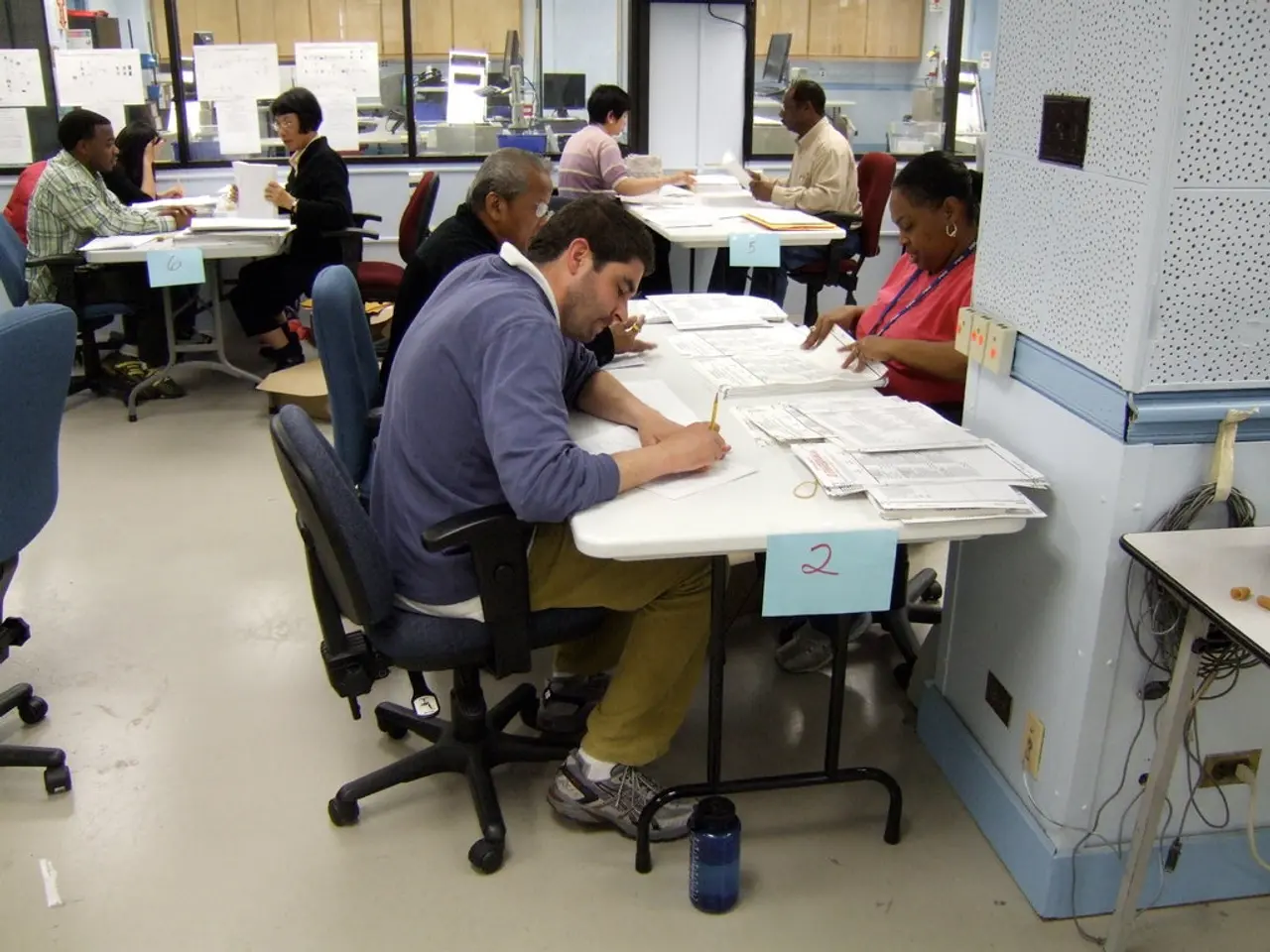Strategies for Boosting Efficiency in Overworked Workspaces
In today's fast-paced world, maintaining productivity and mental clarity can be a challenge. However, by adopting a few strategic practices, individuals can streamline their workflows, reduce cognitive overload, and improve their ability to manage tasks efficiently.
The Two-Minute Rule
The Two-Minute Rule is a productivity strategy that encourages the immediate completion of tasks that take two minutes or less. By promptly addressing these small tasks, they do not pile up and clutter mental space, reducing procrastination and freeing mental bandwidth for bigger priorities. This rule can be integrated with time blocking by designating brief windows for two-minute tasks between focused work sessions.
Batching Similar Tasks
Grouping similar activities together, known as task batching, minimises task-switching, which is mentally taxing. This approach allows for more sustained focus and efficiency. Time blocking transforms task grouping into actionable scheduling by designating specific periods for similar activities.
Voice-to-Text Technology
Using voice-to-text technology streamlines communication and note-taking processes, saving time and mental effort spent on typing. This technology helps maintain workflow momentum and reduces distractions, positively impacting cognitive resources.
Phone Boundaries
Setting limits on phone usage, such as designated no-phone times, reduces interruptions, helping preserve mental bandwidth for focused work periods. By controlling distractions, phone boundaries enhance sustained attention and productivity.
Email Templates
Pre-written responses save time and reduce decision fatigue when managing emails, thereby speeding up communication processes and reserving mental energy for more complex tasks.
Daily Focus
Concentrating on one task at a time or limiting focus to key priorities reduces multitasking’s negative impact on mental processing and improves work quality. Time-blocking or setting small objectives as part of daily focus strategies foster better task completion and mental clarity.
Strategic Procrastination
Deliberately delaying low-priority or less important tasks allows mental resources to be allocated to high-impact activities. This selective approach prevents burnout and maximises productivity by focusing energy where it matters most.
By implementing these methods, individuals can reduce cognitive overload, streamline workflows, and improve their ability to manage tasks efficiently, thereby enhancing both productivity and mental bandwidth.
Additional Tips
- Implement a "batching" system for non-urgent communications.
- Schedule specific times for checking messages and returning calls.
- Use airplane mode during deep work sessions to eliminate interruptions.
- Set clear expectations with colleagues about response timeframes.
- Create phone-free zones in your workspace to maintain visual focus.
- The Two-Minute Rule, a productivity strategy, encourages the immediate completion of short tasks, freeing mental bandwidth for more significant tasks.
- Grouping similar activities together, or batching tasks, reduces mental exhaustion caused by task-switching, leading to better focus and efficiency.
- Using voice-to-text technology streamlines communication, saving time and mental effort, thereby maintaining workflow momentum and reducing distractions.
- Setting phone boundaries, such as designated no-phone times, helps maintain focus during work periods, enhancing productivity by minimizing interruptions.
- Strategic procrastination, deliberately delaying low-priority tasks, allows mental resources to be allocated to high-impact activities, preventing burnout and maximizing productivity.
- Implementing the batching system for non-urgent communication, scheduling specific times for checking messages, using airplane mode during deep work sessions, setting clear expectations with colleagues about response timeframes, and creating phone-free zones in your workspace can further streamline workflows and improve productivity.




